SaaS tools for remote workers. The shift to remote work has been dramatic, with a significant surge in teams working outside traditional office environments. As we navigate this new landscape, the right management tools are crucial for maintaining productivity.
With the rise of remote work, there’s a growing need for tools that facilitate effective management, enhance collaboration, and keep teams connected. We will explore the top SaaS tools designed to address these challenges and boost productivity for remote teams.
Key Takeaways
- Understanding the role of SaaS tools in enhancing remote work productivity.
- Exploring categories of tools for effective management.
- Identifying the best tools for team collaboration and communication.
- Learning how to choose the right tools for your remote team‘s needs.
- Discovering how SaaS tools can transform your remote work environment.
The Rise of Remote Work and the Need for Effective Tools
Remote work has become the new normal, and businesses are adapting to this change by implementing new strategies and tools to manage projects effectively and help teams collaborate. As we navigate this shift, it’s essential to understand the impact of remote work on the business landscape and the challenges that come with managing remote teams and sharing files.
Transforming the Business Landscape
The way we work has undergone a significant transformation. With 39% of surveyed companies now operating fully remotely, the traditional office environment is no longer the only norm. This shift has brought about numerous benefits, including increased flexibility and access to a broader talent pool.
However, it also presents challenges in terms of communication, collaboration, and maintaining company culture. To overcome these challenges, businesses must adopt effective tools and strategies that facilitate seamless interaction among team members, regardless of their location.
| Challenge | Impact | Solution |
|---|---|---|
| Communication Barriers | Delayed responses, misunderstandings | Implementing real-time communication tools |
| Project Coordination | Difficulty in tracking progress | Utilizing project management software |
| Maintaining Company Culture | Remote employees feeling disconnected | Regular virtual team-building activities |
Challenges Faced by Remote Teams
Managing remote teams requires a different approach than traditional in-office management. The lack of face-to-face interaction can lead to feelings of isolation and disconnection among team members. Moreover, coordinating projects and tracking progress can become more complicated when team members are dispersed across different time zones.
To address these challenges, businesses must invest in the right tools and technologies that facilitate effective communication, collaboration, and project management. These tools allow teams to manage remote workflows, enabling them to share files easily and help team members stay connected. By doing so, they can ensure that their remote teams remain productive and engaged, regardless of their location.
What Makes a Great SaaS Tool for Remote Workers
In the realm of remote work, SaaS tools play a crucial role in facilitating collaboration and productivity. When evaluating tools for remote work, there are different categories to look for, each supporting various aspects of team collaboration and productivity.

Key Features to Look For; SaaS tools for remote workers
Effective SaaS tools for remote work environments should possess certain key features. Usability is paramount; the best remote work software balances powerful features with intuitive interfaces that don’t require extensive training. This ensures that team members can quickly adapt and start working efficiently.
Cloud-based platforms are particularly valuable for remote teams, allowing access from any device or location. Moreover, scalability features are essential to ensure that the chosen tools can grow alongside the remote team without requiring frequent platform changes.
Integration Capabilities
The importance of choosing SaaS tools that work seamlessly with your existing tech stack cannot be overstated. Integration capabilities are crucial for creating a cohesive workflow for remote teams. API connections and native integrations between different SaaS tools enable smooth interactions and enhance overall productivity.
Furthermore, security considerations are vital when team members access company resources from various networks. Ensuring that SaaS tools provide robust security measures is critical for protecting sensitive information.
Communication Tools: Keeping Teams Connected
In the era of remote work, communication tools have become essential for keeping team members connected and productive. These tools facilitate both synchronous and asynchronous communication, enabling teams to collaborate effectively across different time zones.
Slack
Overview
Slack is a popular messaging app designed for teams. It helps team members talk and share information efficiently. Slack is particularly useful for remote work, allowing users to create channels for different projects or topics, thus keeping conversations organized.
Key Features
Slack’s features include direct messaging, file sharing, and extensive app integrations. These features make it a central hub for team activities, enhancing collaboration and productivity.
Pros
Slack’s channel-based approach keeps conversations organized, making it easier for team members to follow discussions. Its extensive integrations with other apps further enhance its utility.
Cons
While Slack is powerful, it can become overwhelming with too many channels and notifications. Managing these effectively is crucial for maximizing its benefits.
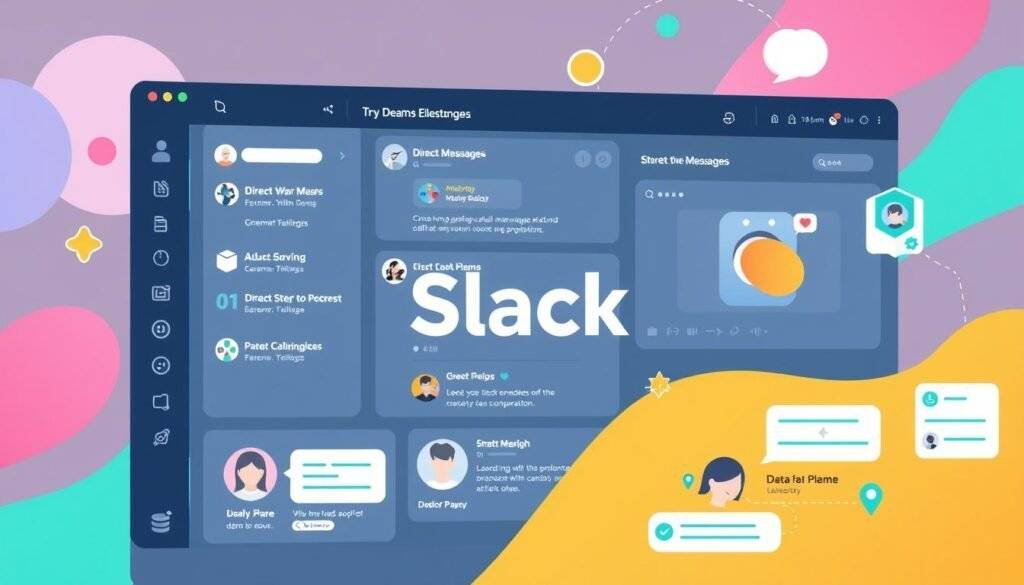
Microsoft Teams
Overview
Microsoft Teams is another robust communication tool that combines chat, video meetings, and file collaboration in one integrated platform. It’s particularly useful for organizations already using Microsoft365, as it integrates seamlessly with these tools.
Key Features
Microsoft Teams offers a range of features that facilitate team collaboration, including chat functionality, video conferencing, and file sharing. Its integration with Microsoft365 enhances its capabilities, making it a comprehensive solution for team needs.
Pros
The deep integration with Microsoft365 creates a seamless workflow for organizations using these tools. Microsoft Teams also supports both synchronous and asynchronous communication, catering to different team needs.
Cons
For organizations not already invested in the Microsoft ecosystem, adopting Microsoft Teams might require significant adjustments. Additionally, its feature-rich interface can be daunting for new users.
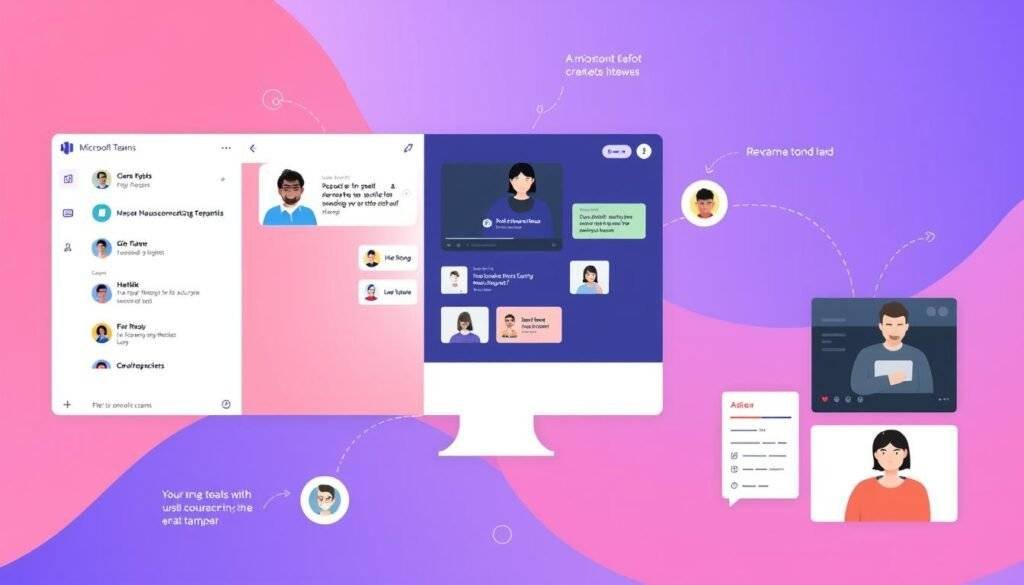
Video Conferencing Solutions: Face-to-Face from Anywhere
As remote work continues to reshape the modern workplace, video conferencing tools have become indispensable for maintaining face-to-face connections.
Zoom
Overview
Zoom has emerged as a leading video conferencing platform, particularly during the global shift to remote work. It’s known for its reliability, ease of use, and high-quality video and audio, making it ideal for team meetings.
Key Features
Zoom offers a range of features that enhance the video conferencing experience, including screen sharing, recordings, breakout rooms, webinars, chat functionality, virtual backgrounds, waiting rooms, polls, and hand raising. These features like screen sharing and breakout rooms make it a versatile tool for various meeting formats.
Pros
One of Zoom’s significant advantages is its ability to handle large meetings smoothly. It also offers a user-friendly interface and robust functionality, making it a popular choice among remote teams.
Cons
Despite its strengths, Zoom has faced security concerns in the past, which have been a point of contention for some users. Additionally, prolonged use can lead to fatigue, a common issue with many video conferencing apps.

Google Meet
Overview
Google Meet is another robust video conferencing solution that has evolved significantly over the years. It’s part of Google Workspace, offering seamless integration with other Google tools like Calendar and Gmail, making it highly convenient for teams already using Google’s ecosystem and allows teams to manage remote work effectively.
Key Features
Google Meet offers high-quality video, screen sharing, recording capabilities, and real-time captions. Its integration with Google Calendar simplifies scheduling meetings, enhancing productivity for remote teams.
Pros
Google Meet is praised for its simplicity and accessibility. It’s particularly beneficial for organizations already invested in Google Workspace, providing a streamlined experience.
Cons
While Google Meet is reliable, it may lack some advanced features available in other platforms like Zoom. However, its integration with Google tools often compensates for this.

In conclusion, both Zoom and Google Meet offer robust video conferencing solutions that cater to different needs. When choosing between them, consider factors like team size, meeting formats, and existing ecosystem integrations to make an informed decision.
Project Management Tools: Keeping Tasks Organized
Effective project management is crucial for remote teams to stay organized and productive. We rely on various tools to keep tasks on track and ensure that all team members are aligned with the project’s objectives.
Asana
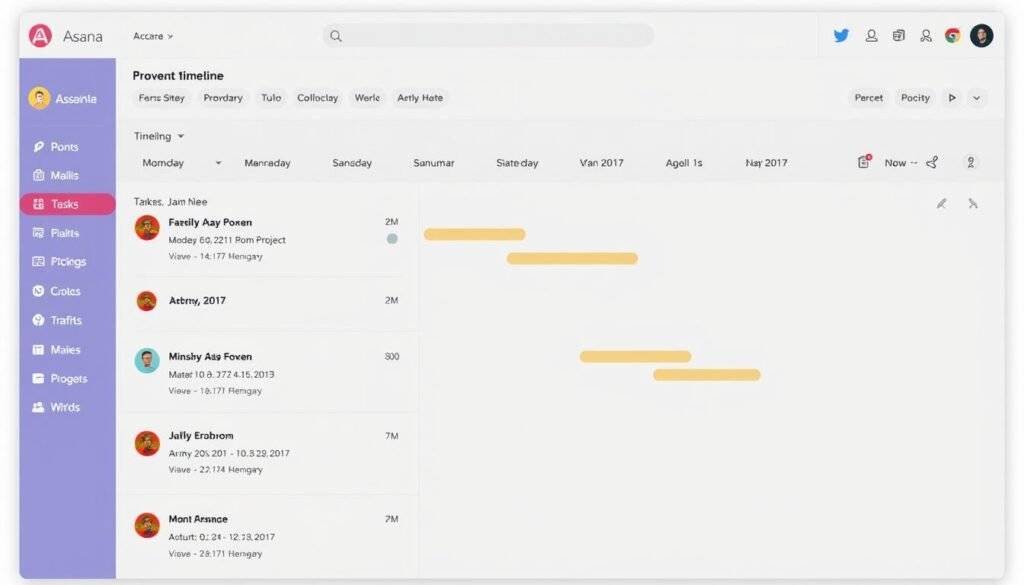
Overview
Asana is a comprehensive project management tool designed to help teams plan and track their work. It uses tasks, projects, and timelines to keep everyone on the same page.
Key Features
Asana’s key features include task dependencies, custom fields, and workflow automation. These features help remote teams coordinate complex projects and ensure that all tasks are completed on time.
Pros
Asana excels in managing complex projects with multiple tasks and dependencies. Its flexibility allows it to work for many types of projects, making it a versatile tool for various teams.
Cons
However, Asana can present a steeper learning curve for new users, especially those without prior experience with project management tools.
Trello
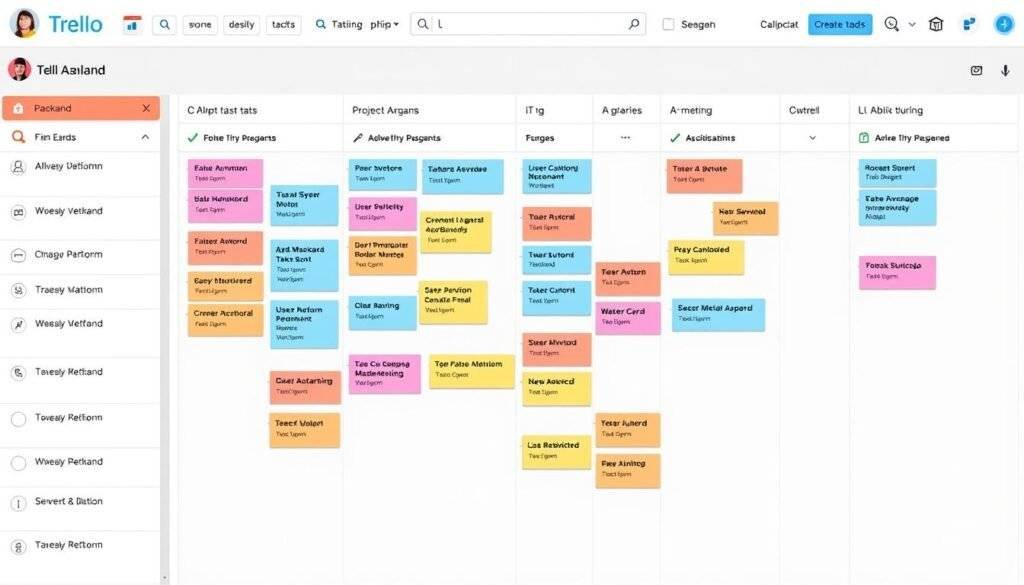
Overview
Trello is a visual project management tool that uses boards, lists, and cards to organize tasks. It’s known for its ease of use and helps teams see their progress at a glance.
Key Features
Trello’s card-based system and drag-and-drop functionality create an intuitive experience that requires minimal training for new users. This makes it an excellent choice for teams looking for a straightforward project management solution.
Pros
Trello is very visual, allowing teams to see all their tasks and projects in one place. This visual approach helps in maintaining transparency and accountability around task ownership and progress.
Cons
While Trello is great for many projects, it might not be as effective for very complex projects that require detailed task dependencies and workflow automation.
Both Asana and Trello are powerful project management tools that cater to different needs. Asana is ideal for complex projects that require detailed planning and tracking, while Trello is perfect for teams looking for a simple, visual way to manage their tasks.
Advanced Project Management: For Complex Team Needs
As teams grow and projects become more complex, the need for advanced project management tools becomes increasingly evident. Managing multiple tasks, tracking progress, and maintaining team collaboration are crucial for success.
Jira
Overview
Jira is a powerful project management tool designed for software development teams and other technical projects. It has become an industry standard due to its comprehensive features and flexibility.
Key Features
Jira offers a range of features that make it ideal for complex project management, including customizable workflows, advanced reporting, sprint planning capabilities, and issue tracking. These features enable teams to break down large projects into manageable pieces and track progress effectively.
Pros
The pros of using Jira include its ability to handle complex projects, provide real-time insights, and support Agile methodologies like Scrum. Its comprehensive functionality makes it a preferred choice for many software development teams.
Cons
However, Jira has a steeper learning curve and can be complex for simpler projects. This means that teams need to invest time in training to fully utilize its capabilities.

Monday.com
Overview
Monday.com is another advanced project management tool that combines visual appeal with powerful customization options. It’s designed to adapt to virtually any workflow, making it highly versatile.
Key Features
Monday.com’s key features include boards, customizable workflows, timeline view, task assignment, automations, and integrations. These features allow teams to plan and track their work in a highly visual and intuitive manner.
Pros
The pros of Monday.com include its ease of use, visual interface, and extensive automation capabilities. It provides multiple views of the same data, such as Kanban, Gantt, and calendar views, making it highly adaptable to different project needs.
Cons
While Monday.com is highly customizable, this can sometimes lead to complexity if not managed carefully. Teams need to balance the level of customization with the need for simplicity and ease of use.
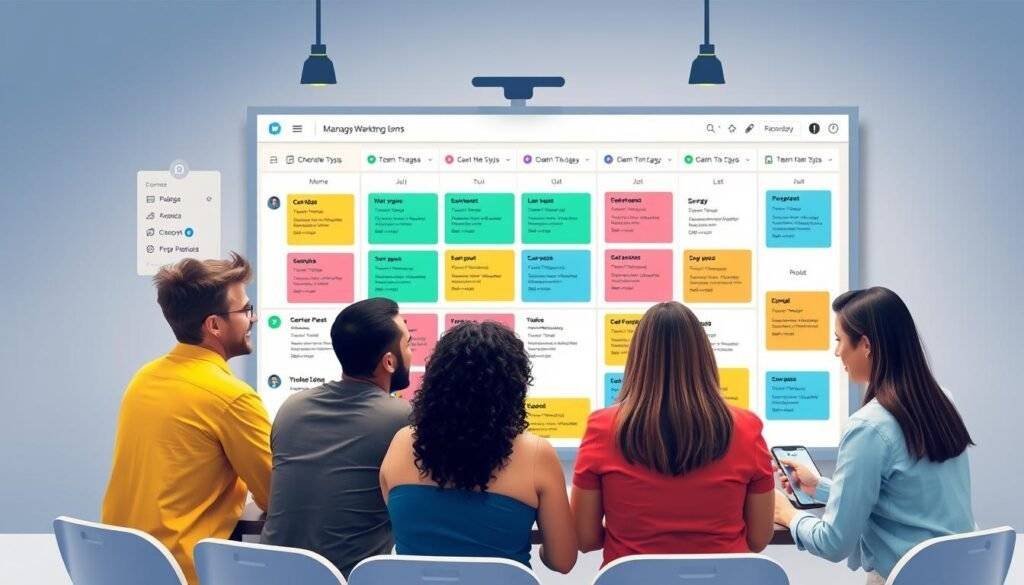
Both Jira and Monday.com offer robust solutions for teams with complex project needs. By understanding the strengths and weaknesses of each tool, teams can make informed decisions about which tool best suits their specific requirements.
File Sharing and Cloud Storage Solutions
As remote work continues to grow, the need for efficient file sharing and cloud storage solutions has become increasingly important. Cloud storage has become the digital equivalent of physical file cabinets and shared drives for remote teams, enabling them to access and collaborate on files from anywhere.
Google Drive
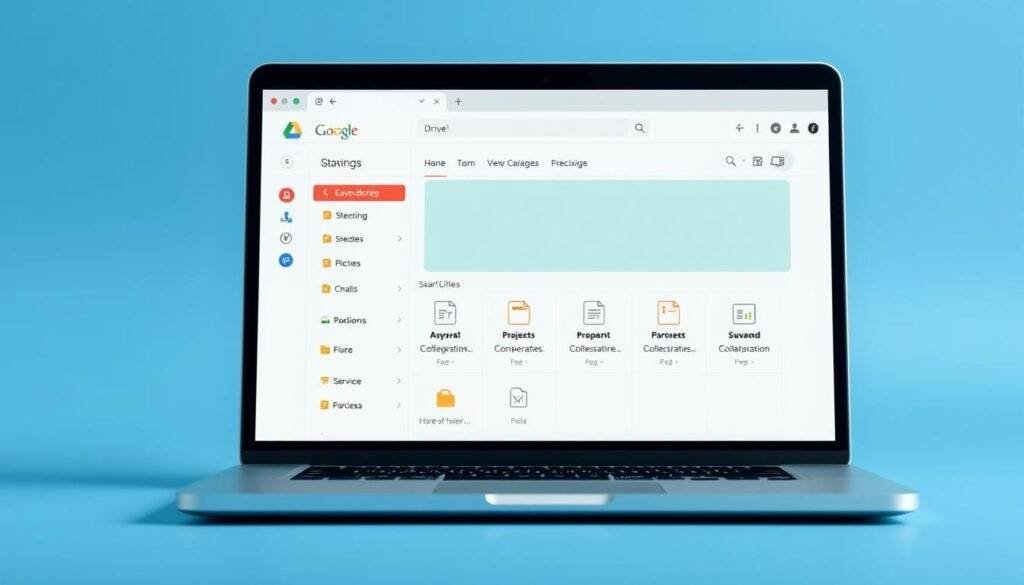
Overview
Google Drive is a comprehensive cloud storage solution that helps remote teams with file sharing and collaboration. It allows users to easily upload, access, and collaborate on documents, spreadsheets, and presentations from anywhere.
Key Features
Google Drive offers several key features, including generous free storage, powerful search capabilities, and version history that tracks all document changes. Its integration with Google Docs, Sheets, and Slides enables real-time collaboration, making it an ideal choice for remote teams.
Pros
Seamless Integration: Google Drive integrates perfectly with other Google apps, enhancing collaboration and productivity. Generous Storage: Google Drive offers 15GB of free storage, with affordable upgrade options.
Cons
While Google Drive excels in the Google ecosystem, it may present limitations for certain file types or workflows. Additionally, its version history can sometimes be confusing to navigate.
Dropbox
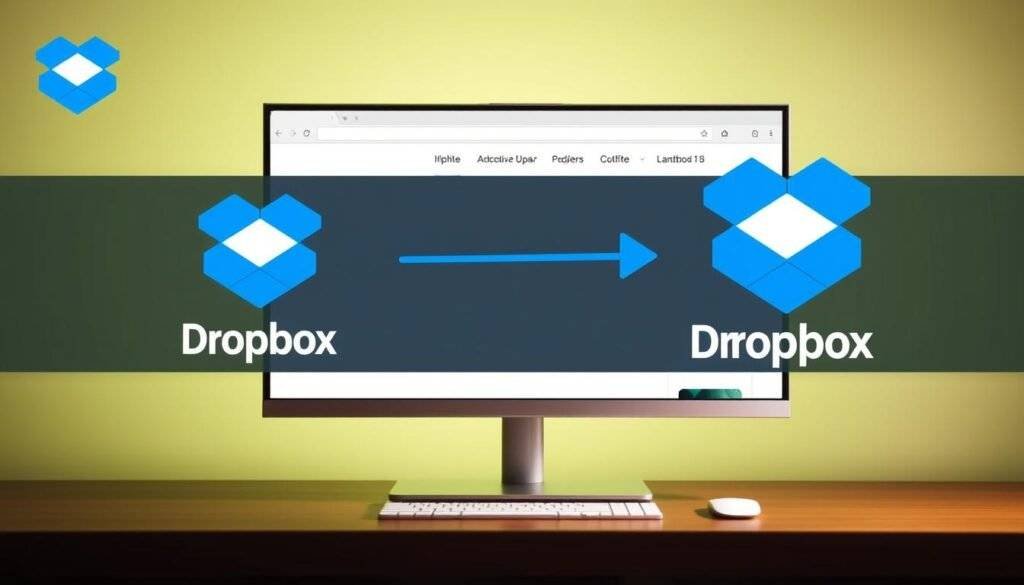
Overview
Dropbox is a pioneering cloud storage platform that has been a staple for remote teams. It offers a streamlined, user-friendly experience for file sharing and collaboration.
Key Features
Dropbox’s key features include file synchronization, cross-platform compatibility, and Paper collaboration features. Its intuitive folder structure and sharing capabilities make it a user-friendly choice for distributed organizations.
Pros
Reliable File Sync: Dropbox ensures that files are always up-to-date across all devices. User-Friendly Interface: Its simple and intuitive interface makes it easy for teams to adopt and use.
Cons
Dropbox’s free storage is limited compared to some competitors, and its advanced features require a paid subscription. Some users may also find its interface less feature-rich compared to Google Drive’s integrated ecosystem.
When choosing between Google Drive and Dropbox, remote teams should consider their specific needs regarding file sharing, collaboration, and storage. Both services offer robust security features, including encryption and access controls, to protect sensitive company files.
Time Tracking and Productivity Tools
Managing remote teams requires more than just the right communication tools; it demands effective time tracking and productivity solutions. As we explore the best tools for remote work, it’s essential to understand how time tracking can enhance team productivity and accountability.
Toggl
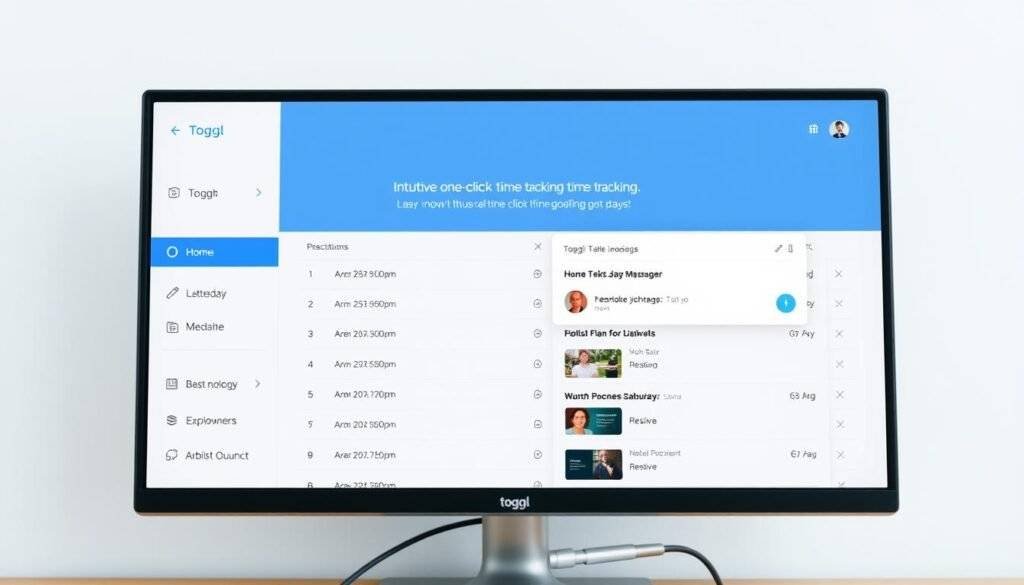
Overview
Toggl is a time tracking tool designed to help remote employees stay accountable and deliver projects on time. With its user-friendly desktop and mobile app, team members can easily log their hours, monitor productivity, and generate detailed reports.
Key Features
Toggl’s key features include one-click time tracking, detailed reporting, project budgeting, and team dashboard views. These features provide insights into team productivity without the need for micromanagement.
Pros
The pros of using Toggl include its user-friendly approach to time tracking, which minimizes friction for team members. Toggl also offers robust reporting capabilities, making it easier to monitor productivity and project progress.
Cons
While Toggl is excellent for simple time tracking, it may have limitations for complex billing scenarios. Teams with intricate billing requirements might find Toggl’s features somewhat restrictive.
Hubstaff Tasks
![]()
Overview
Hubstaff Tasks provides a comprehensive solution by combining time tracking with task management. This integration gives managers detailed insights into remote employees’ work activities, helping to identify productivity patterns and potential bottlenecks.
Key Features
Hubstaff Tasks’ key features include activity monitoring, screenshot capabilities, and detailed productivity analytics. These features give managers greater visibility into team productivity, enabling data-driven decisions to optimize workflows.
Pros
The pros of Hubstaff Tasks include its ability to provide detailed productivity insights, helping managers identify areas for improvement. The tool also promotes transparency and accountability within remote teams.
Cons
Some teams might view Hubstaff Tasks’ monitoring features as intrusive if not implemented carefully. It’s crucial to balance productivity monitoring with employee privacy to maintain trust.
By leveraging time tracking data from tools like Toggl and Hubstaff Tasks, remote teams can improve project estimation, resource allocation, and workflow efficiency. These tools are essential for maintaining productivity and accountability in remote work environments.
Employee Monitoring and Management Solutions
As remote work continues to reshape the modern workplace, organizations are increasingly seeking effective employee monitoring and management solutions. These tools help maintain visibility into remote work activities while balancing productivity needs with employee privacy.
Zluri
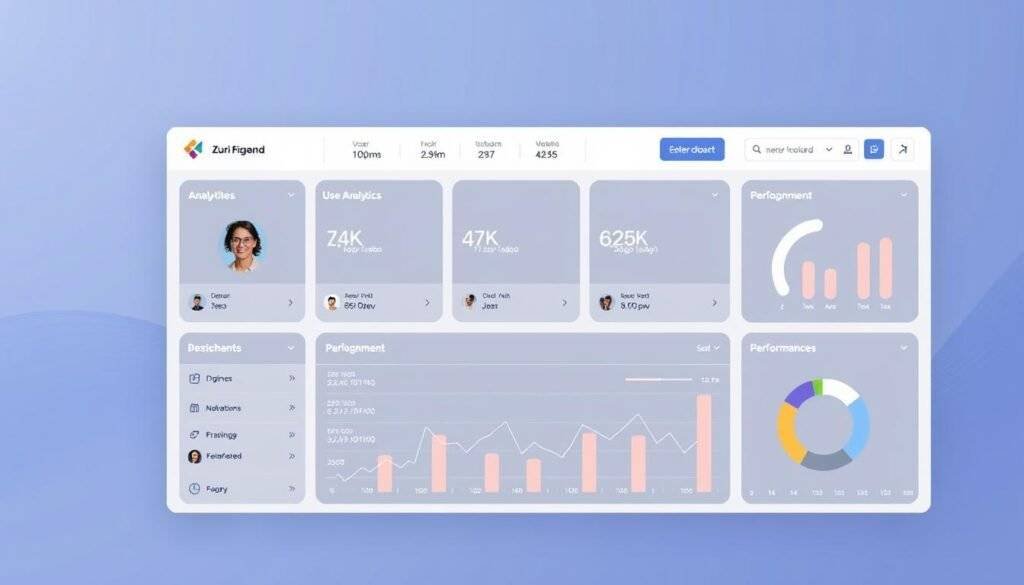
Overview
Zluri stands out as an all-in-one solution for managing remote, hybrid, and on-premises employees, handling SaaS applications, and providing insights into application usage and security compliance.
Key Features
Zluri offers several key features, including SaaS discovery methods, a centralized dashboard, and automated workflows for employee onboarding and offboarding. These features enable organizations to manage their SaaS applications efficiently and streamline employee lifecycle management.
Pros
The pros of using Zluri include its comprehensive approach to SaaS management, ease of use, and the ability to automate various tasks. This makes it an attractive option for organizations with complex SaaS ecosystems.
Cons
Some potential drawbacks of Zluri include the need for significant setup and configuration, which may require specialized knowledge or external support.
Teramind
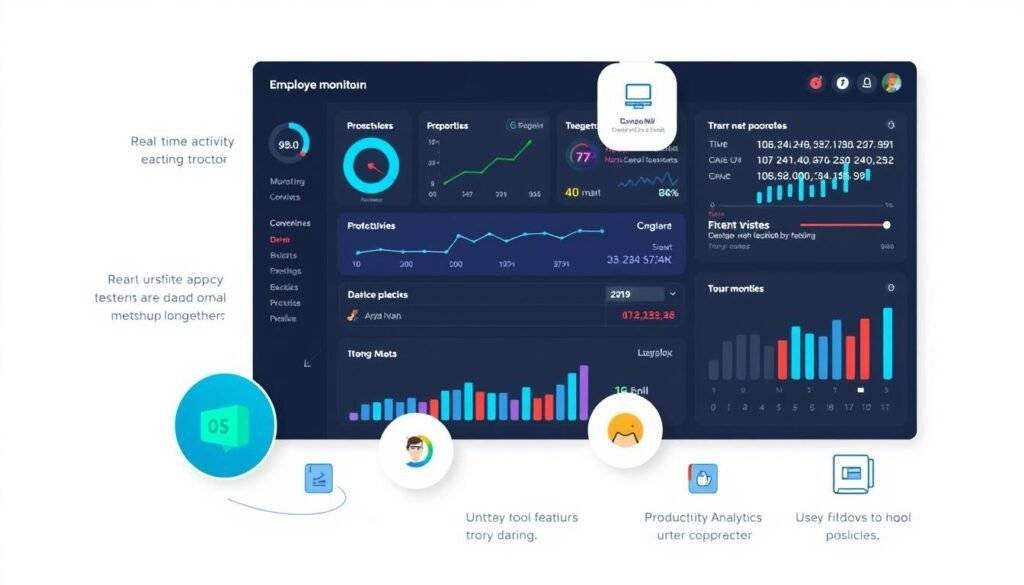
Overview
Teramind is an advanced platform that offers intensive monitoring capabilities, including activity tracking, screen recording, and behavioral analytics. It provides a centralized dashboard that gathers all relevant information about an employee’s activity.
Key Features
Teramind’s key features include application and website monitoring, which provide detailed insights into how employees spend their digital time. This helps organizations understand productivity patterns and identify areas for improvement.
Pros
The pros of Teramind include its robust monitoring capabilities and detailed analytics, making it suitable for organizations that require close oversight of employee activities.
Cons
Potential cons of Teramind include the risk of infringing on employee privacy if not implemented carefully, and the need for clear policies to govern its use.
In conclusion, both Zluri and Teramind offer valuable solutions for employee monitoring and management. By understanding their features, pros, and cons, organizations can make informed decisions about which tool best suits their needs.
Virtual Collaboration Spaces
The shift towards remote work has underscored the importance of virtual collaboration spaces, where teams can come together, brainstorm, and work on projects in a shared digital environment. These spaces are designed to replicate the spontaneous interactions and visual thinking that occur naturally in physical offices, helping to combat the isolation that can come with remote work.
Miro

Overview
Miro is a virtual whiteboard platform that enables visual collaboration across distributed teams. It allows users to brainstorm, plan projects, and visualize workflows in a highly interactive digital workspace.
Key Features
Miro’s key features include an infinite canvas for unrestricted brainstorming, real-time collaboration capabilities, a wide range of templates for various methodologies, and seamless integration with other productivity tools.
Pros
Miro is particularly beneficial for visual thinkers, offering a flexible and intuitive platform for creative problem-solving. Its extensive feature set and integrations make it a powerful tool for team collaboration.
Cons
Some users may experience a learning curve due to Miro’s extensive capabilities, particularly those less comfortable with spatial organization and digital whiteboards.
Gather
![]()
Overview
Gather is a team management tool that replicates the organic interactions and spontaneous connections of an in-person office environment. It features a customizable virtual office space where distributed employees can navigate and meet colleagues, sparking impromptu discussions and knowledge-sharing.
Key Features
Gather’s key features include the ability for team members to navigate as avatars in a virtual space, proximity-based audio that mimics real-world spatial dynamics, and customizable virtual environments that can be tailored to the team’s needs.
Pros
Gather excels at recreating the social dynamics of an office environment, helping to build a sense of community and connection among remote teams. It’s an excellent platform for team building and spontaneous interactions.
Cons
The effectiveness of Gather can depend on the team’s willingness to engage with the virtual environment and the quality of their internet connection.
Both Miro and Gather offer unique solutions for virtual collaboration, helping teams to work together more effectively and maintain a sense of connection in a remote work environment. By leveraging these tools for collaboration, teams can enhance their productivity and creativity.
Security Tools for Remote Teams
The shift to remote work has highlighted the need for robust security tools to protect company data and ensure secure access for remote teams. As organizations continue to adapt to this new landscape, it’s crucial to implement comprehensive security measures that safeguard sensitive information without hindering productivity.
1Password

Overview
1Password is a comprehensive password management tool designed to secure every sign-in for every app on every device. By allowing teams to store their encrypted password database locally, 1Password ensures complete control over sensitive information.
Key Features
1Password offers a range of key features, including secure password storage, sharing capabilities, breach monitoring, and local encryption. These features work together to protect sensitive login information and prevent unauthorized access.
Pros
The use of 1Password can significantly enhance team security by ensuring that all members use strong, unique passwords. It also simplifies password sharing and management, reducing the risk associated with weak or duplicated passwords.
Cons
While 1Password offers robust security features, its effectiveness depends on user adoption and proper configuration. Some teams may find the initial setup process challenging, particularly if they are not familiar with password management tools.
Okta Workforce Identity Cloud
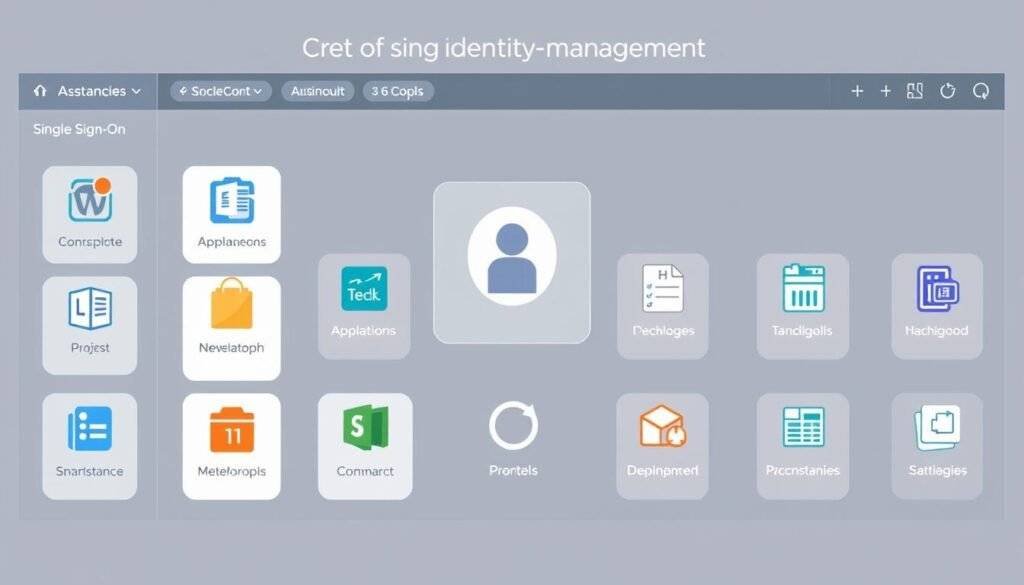
Overview
Okta Workforce Identity Cloud is a leading identity management platform that provides secure and seamless access to the apps and resources that remote teams need. By offering single sign-on, multi-factor authentication, and lifecycle management, Okta streamlines secure access while reducing the IT burden.
Key Features
Okta’s key features include single sign-on, allowing employees to access multiple apps with one set of credentials, and multi-factor authentication, which adds an extra layer of security to the login process. These features simplify the login process and reduce password fatigue.
Pros
Okta Workforce Identity Cloud enhances security by providing centralized identity management and access control. It also improves user experience by reducing the number of login credentials employees need to remember.
Cons
Implementing Okta Workforce Identity Cloud may require significant upfront investment in terms of time and resources, particularly for larger organizations with complex identity management needs.
Comprehensive SaaS Tools for Remote Workers
As remote work continues to shape the modern business landscape, the need for comprehensive SaaS tools has never been more critical. These all-in-one solutions provide integrated applications that cater to multiple remote work needs within a single ecosystem.
Google Workspace
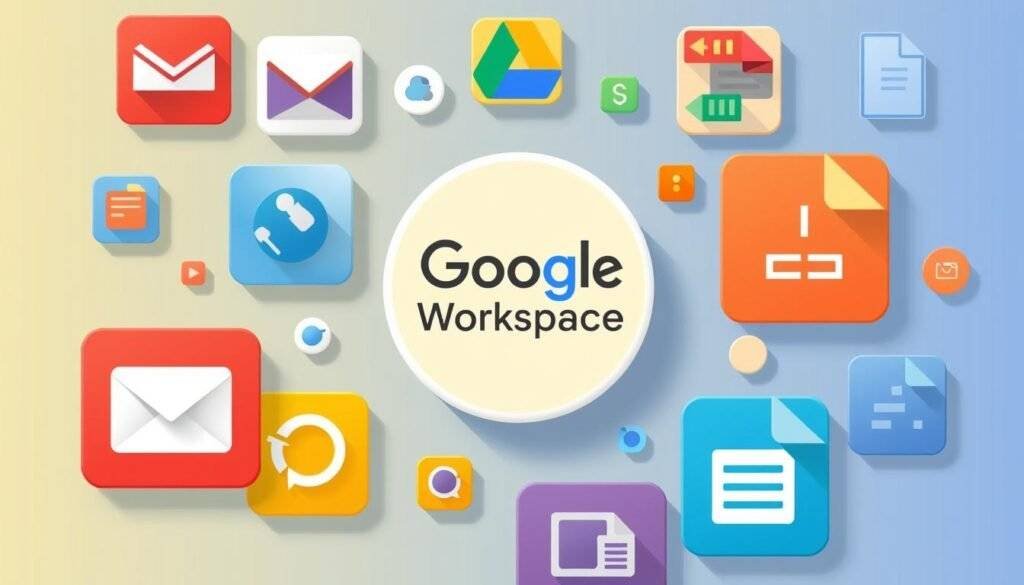
Overview
Google Workspace is a suite of productivity tools designed for teams. It includes Gmail for email, Google Drive for file storage, and Docs, Sheets, and Slides for document creation. These tools enable real-time collaboration, making it easy for multiple users to work on a document simultaneously.
Key Features
The key features of Google Workspace include real-time collaboration, seamless integration with other Google apps, and robust security measures. Users can access their files and applications from anywhere, on any device, as long as they have internet access.
Pros
Google Workspace offers several advantages, including enhanced collaboration, improved productivity, and streamlined workflows. The suite is also highly scalable, making it suitable for businesses of all sizes.
Cons
While Google Workspace is a powerful tool, it may have limitations for users who require advanced features in certain applications. Additionally, some users may find the transition from other productivity suites challenging.
Microsoft365
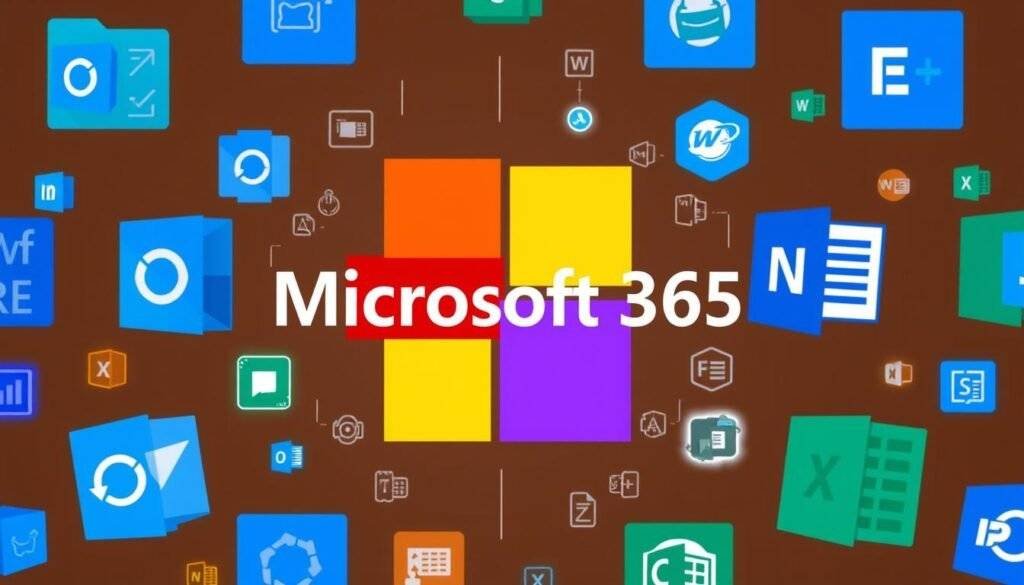
Overview
Microsoft365 is a comprehensive suite of productivity tools that combines familiar Office applications with cloud services and collaboration features. It offers solutions for email, file storage, and document creation, making it an ideal choice for remote teams.
Key Features
The key features of Microsoft365 include Outlook for email and calendar management, OneDrive for file storage and sharing, and Word, Excel, and PowerPoint for document creation. The suite also offers real-time collaboration capabilities and Teams integration for enhanced communication.
Pros
Microsoft365 provides a complete productivity environment, with a wide range of tools that cater to diverse business needs. The suite is also highly customizable, allowing users to tailor it to their specific requirements.
Cons
While Microsoft365 is a powerful tool, it may be overwhelming for some users due to its extensive feature set. Additionally, some businesses may find the cost of the suite to be prohibitively expensive.
In conclusion, both Google Workspace and Microsoft365 offer comprehensive SaaS solutions for remote workers. By understanding the features, pros, and cons of each suite, businesses can make informed decisions about which tool best suits their needs.
Specialized Tools for Remote Team Building
As remote work continues to reshape the modern workplace, the need for specialized tools to foster team cohesion has become increasingly evident. These tools are designed to address the unique challenges of building a strong team culture in a remote environment.
Specialized tools can help bridge the gap between remote team members, enhancing collaboration and productivity. In this section, we’ll explore two such tools: WorkStatus and EmpMonitor.
WorkStatus
![]()
Overview
WorkStatus is a comprehensive workforce management platform that combines productivity tracking with team engagement features. It enables IT teams to manage and track the time of remote teams, ensuring they do more in less time.
Key Features
WorkStatus offers time-tracking features and live location analytics through geofencing, providing real-time insights into remote work locations. This allows for the visualization of team distribution across different areas, enhancing management capabilities.
Pros
The tool provides valuable insights into team operations, helping managers identify areas for improvement. Its geolocation feature is particularly useful for teams spread across different locations.
Cons
While WorkStatus offers robust features, there are potential privacy implications to consider, especially regarding location tracking. It’s essential for company policies to balance monitoring with employee privacy.
EmpMonitor

Overview
EmpMonitor streamlines remote and hybrid workforce management with features that provide daily statistics through active time tracking, activity monitoring, and screenshots. This helps managers stay informed about their team members’ performance.
Key Features
EmpMonitor focuses on employee engagement and productivity management through comprehensive monitoring capabilities. Its features include activity tracking, screenshot monitoring, and performance analytics.
Pros
The tool offers detailed insights into remote work patterns, enabling managers to identify tasks that need improvement and provide necessary support to users.
Cons
As with any monitoring tool, there’s a risk of creating surveillance anxiety if not implemented carefully. It’s crucial to use EmpMonitor in a way that fosters trust among team members.
By leveraging these specialized tools, remote teams can enhance their collaboration and productivity. It’s about choosing the right tool that aligns with the company’s needs and culture.
How to Choose the Right SaaS Tools for Your Remote Team
The right SaaS tools can make a significant difference in the productivity and efficiency of remote teams. With numerous options available, selecting the most appropriate tools can be challenging. We will guide you through the process of evaluating and selecting the right combination of SaaS tools for your specific remote team needs.
Assessing Your Team’s Specific Needs
To choose the right SaaS tools, it’s essential to assess your team’s specific needs. Consider factors such as team size, work type, communication patterns, and existing technology stack. Involving team members in the selection process is crucial to ensure that the tools meet actual user needs rather than just management preferences.
Some key considerations include:
- Identifying the primary tasks and projects that the tools will be used for
- Evaluating the communication and collaboration requirements of your team
- Assessing the scalability and flexibility of potential tools
Balancing Features, Usability, and Cost
When selecting SaaS tools, it’s vital to strike a balance between features, usability, and cost. While comprehensive functionality is important, it’s equally crucial to consider the ease of adoption and the potential for “tool fatigue.” Ensure that the tools you choose integrate well together and provide a clear return on investment (ROI).
| Tool | Features | Usability | Cost |
|---|---|---|---|
| Project Management Tool | Task assignment, progress tracking, reporting | Intuitive interface, easy onboarding | $10/user/month |
| Communication Tool | Real-time messaging, video conferencing | User-friendly, mobile app available | $5/user/month |
By carefully evaluating your team’s needs and balancing features, usability, and cost, you can select the right SaaS tools to enhance your remote team’s productivity and efficiency.

Conclusion
Effective remote work hinges on more than just the tools used; it’s about implementing a thoughtful strategy that incorporates the right SaaS solutions. As we’ve explored throughout this article, the landscape of SaaS tools for remote workers is vast and varied, offering numerous options to address the challenges of remote work, including communication barriers, project visibility, and team cohesion.
The key to successful management of remote teams lies in selecting the right combination of tools that enhance productivity and facilitate seamless collaboration. This involves not just adopting the latest tools, but also ensuring they are integrated into a comprehensive remote work strategy. As remote work continues to evolve, organizations must remain flexible in their approach to digital tool adoption, regularly evaluating their tech stack to meet their team’s changing needs.
It’s crucial to strike a balance between productivity and monitoring with trust and autonomy in management practices. We encourage readers to identify the most critical gaps in their current remote work setup and address them systematically, rather than trying to implement too many new tools at once. Ultimately, the goal of any SaaS tool should be to enable human connection and collaboration, bridging the physical distance between remote workers.
By adopting a thoughtful and flexible approach to SaaS tool adoption, organizations can create a remote work environment that is both productive and conducive to team well-being.
